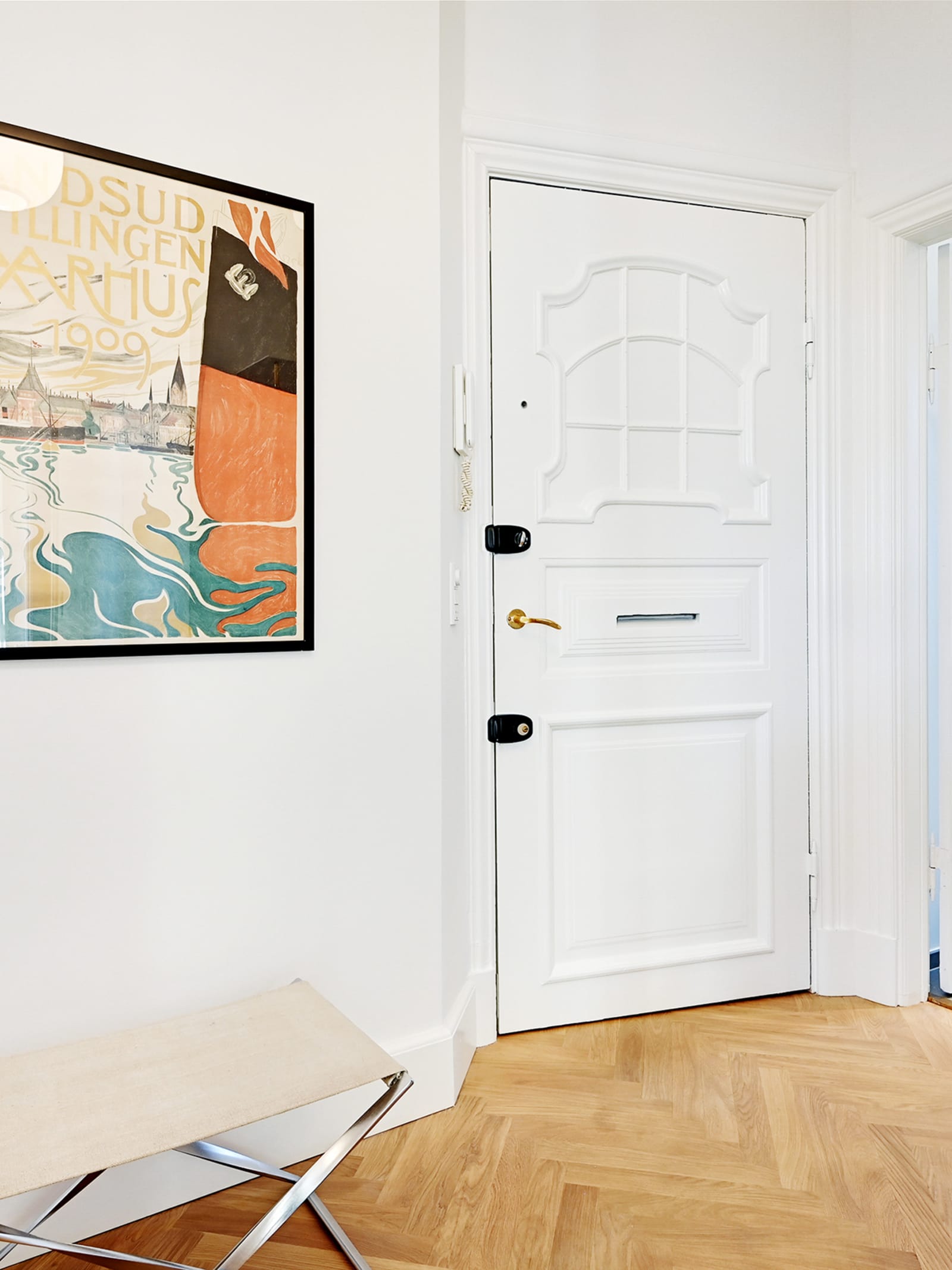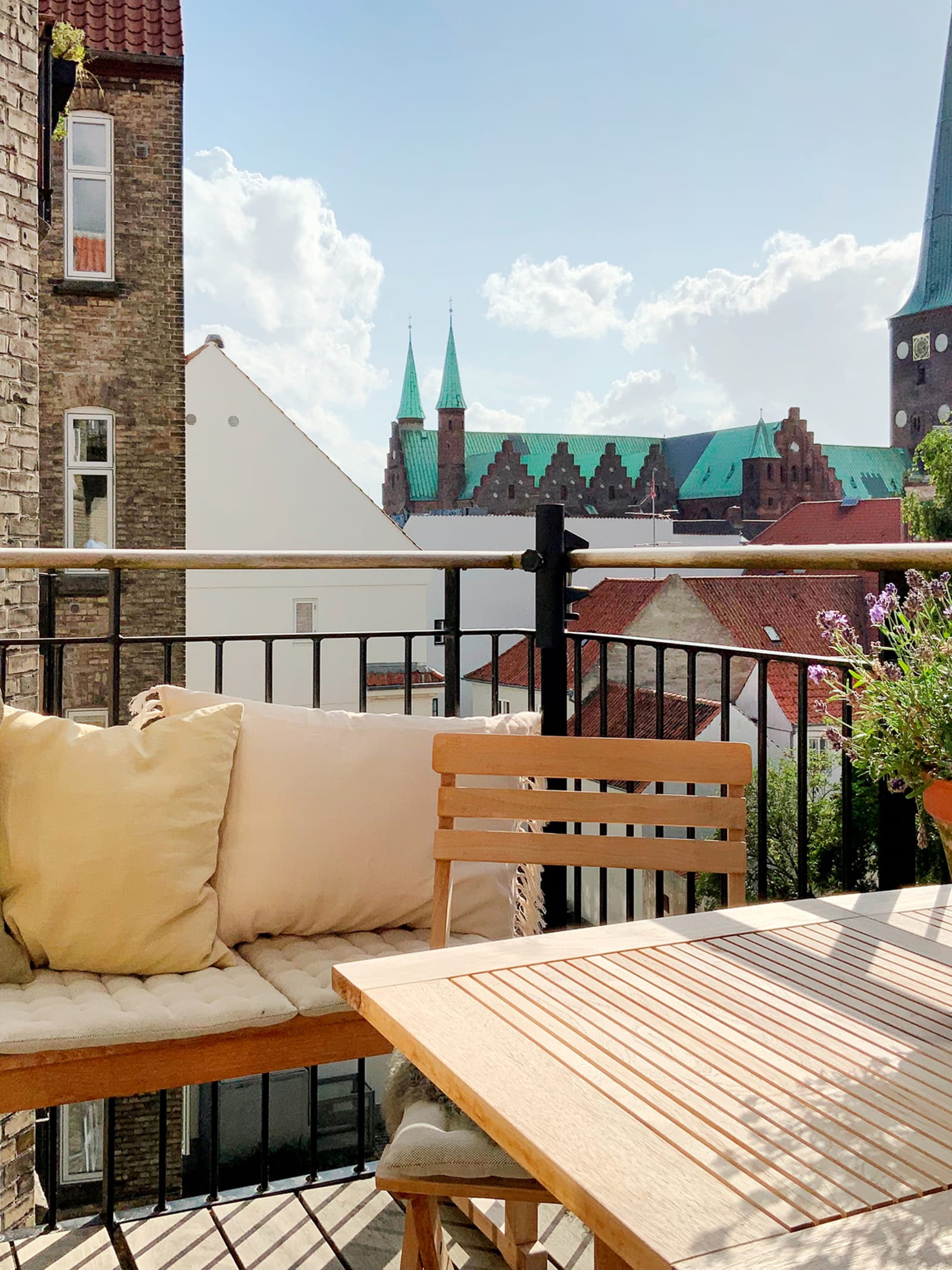An error occured
Try again later
No search results
No search results
With views of Aarhus Cathedral
Kitchen model
Copenhagen
Material
Oak
When Susanne and Robert bought the apartment in 2017, it had not been touched since it was first built in 1914. For Robert, the setting and location were perfect, and with more than three-metre-high ceilings, it was the ideal place for the classic lamps which he had standing at home in the basement of their house in Silkeborg in central Jutland. Because, while Robert has always felt that at some point he would find himself living in a high-ceilinged apartment, it was not a feeling shared by Susanne – she had absolutely no intention of living there.
For the first three years, the couple’s daughter lived in the apartment while she was studying. During that time, Susanne fell more and more in love with the idea of living in the apartment – in the middle of the city, yet still close enough to nature and the woods at Moesgaard, where she often goes running.



Dieter Rams’ 10 principles for good design
From when the couple started renovating the property, it took eight months before they could move into a completely refurbished apartment where all the character and original details had been preserved.
The entire apartment bears the hallmarks of Robert’s interest in Danish designer classics and older architect-designed furniture – in the hallway stands Arne Jacobsen’s Sea Gull chair from 1970, which was originally designed for Danmarks Nationalbank, and a PK91 folding chair with canvas, produced by E. Kold Christensen in the 1970s. In the bedroom stands one of the 333 Panton Glow chairs that were manufactured as a limited anniversary model in 2018, together with Poul Kjærholm’s PK1 wicker chairs, also produced in the 1970s by E. Kold Christensen, and which serve as bedside tables.



Living rooms en-suite with visual eye-catcher
The original posters in the hallway have been owned by the couple for many years, but their interest in art has grown in particular after moving into the apartment. Their most recent purchases were two paintings by Michael Kvium.
Robert bought the large painting in the dining room in 2018. It was painted in 1970 by Louis Rosen Schmidt, who was the son of newspaper editor-in-chief Erik Schmidt at Aarhus Stiftstidende, and who also did several architectural decorative commissions for the newspaper Jyllands-Posten and the amusement park Tivoli Friheden. On account of its size, the painting has been in store, but is now back in the apartment in Aarhus, where it catches one’s eye through the three en-suite living rooms.
Cabinetmaker’s kitchen with clean lines

At the end of the long hallway is the kitchen. The original kitchen and a small butler’s pantry were knocked together, and from the kitchen table Susan and Robert can now enjoy the view of Aarhus Cathedral.
When choosing a kitchen, Susanne fell for the hand-crafted Copenhagen collection in oak from uno form because of its stylish and timeless look. After seeing a white kitchen in the product configurator, the couple agreed that the apartment should and could take something which stood out more. However, to ensure that nothing disturbs the beautiful indoor environment with its old doors, rosettes and plasterwork, the couple chose a light look with simple lines – and without a visible extractor fan, wall units or any shelving.
The worktop is a chapter in itself. Susanne actually favoured a classic white Corian worktop, but Robert insisted on a worktop in curled steel. The 6.5 metre, one-piece worktop – without any joins – was hoisted up over the property and lifted in through a window in the larder. And the couple has not regretted the choice for a moment, because the worktop has proved to be both a beautiful and practical addition to the kitchen on a daily basis.



About this kitchen
Who
Susanne Hochheim (54) and Robert Hochheim (56)
Where
Aarhus, Denmark



